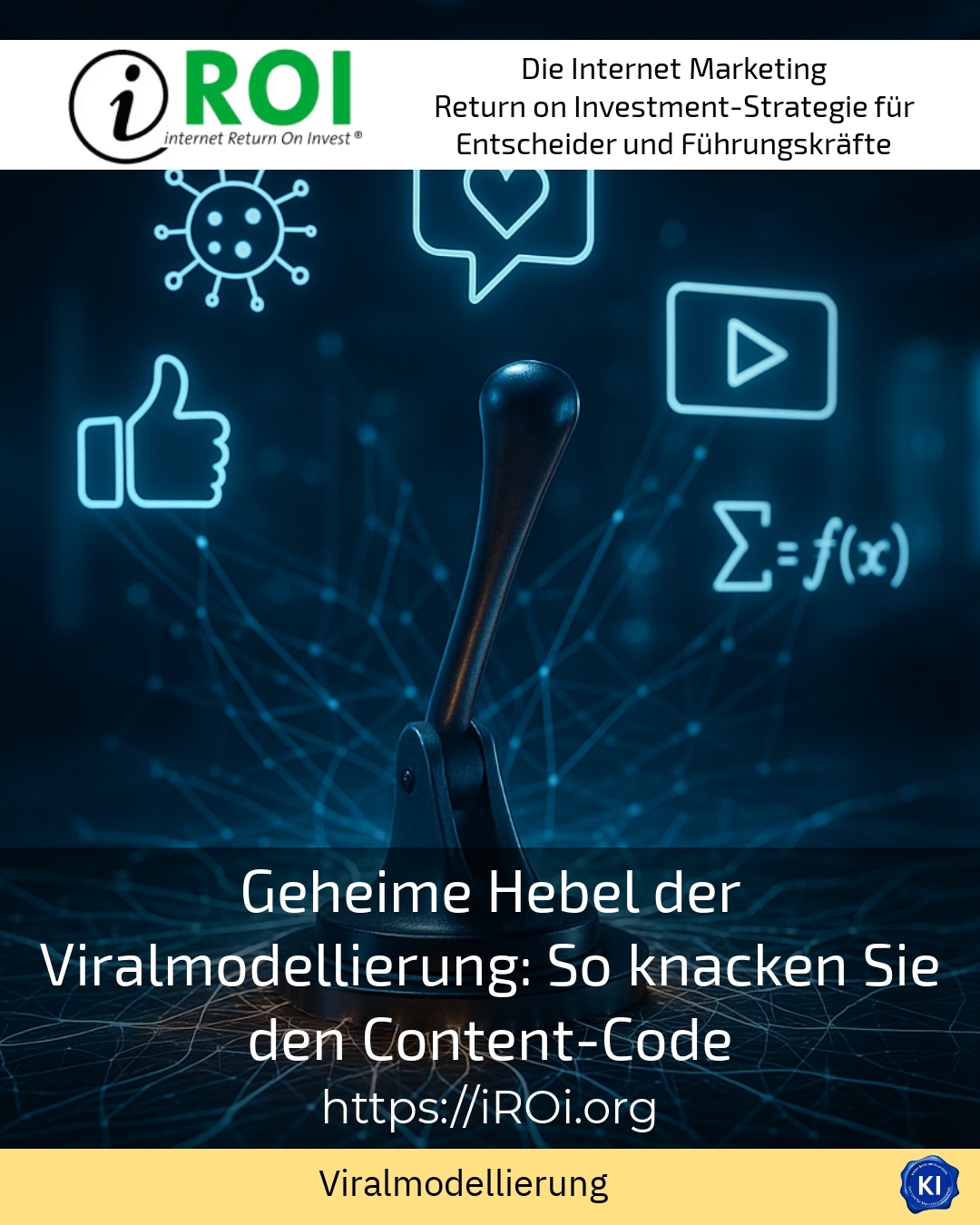Viral modelling** is considered a crucial key to deciphering the often complex content code. At a time when content is distributed quickly and virally via various channels, understanding the hidden mechanisms is essential. This process provides valuable impetus for strategically designing content in such a way that it is distributed in a targeted manner and has an impact on the relevant target groups.
Understanding the basics of viral modelling
Viral modelling does not describe random success, but rather an analytical approach to controlling and predicting the reach of digital content. This involves determining certain parameters that act as driving levers and increase the likelihood of content being shared, commented on and disseminated. This results in controlled growth processes that go beyond mere moments of happiness.
In practice, this form of modelling is particularly common in industries such as entertainment, e-commerce and media production, where reaching large numbers of users quickly is often the key to commercial success. Here it is about more than pure reach - what counts is targeted distribution to the right target group and emotional connection through the right content.
BEST PRACTICE with one customer (name hidden due to NDA contract) The implementation of viral modelling enabled the client from the fashion industry to structure a campaign that not only generated high interaction rates on social media, but also increased relevant leads on the website. Targeted emotionalising content and appropriate timing analyses enabled multipliers to be activated effectively.
The secret lever: emotions and simplicity
One of the key success factors that viral modelling addresses is the emotional appeal to the audience. Content that arouses strong feelings such as joy, surprise or dismay is more likely to be shared and recommended. At the same time, the message must be understandable and conveyed without a great deal of explanation. In the gaming industry, for example, developers often report that short, original clips that depict gaming experiences in a humorous way achieve a particularly high sharing rate.
Retailers also utilise this lever by telling authentic stories behind product innovations that appeal to customers emotionally and encourage them to share. In the education sector, educational content is favoured virally by vivid, easily accessible videos, as they offer a low-threshold introduction to complex topics.
Strategy and timing as decisive factors
Timing plays a major role in viral modelling. Content that ties in with current events or trends is more likely to go viral. In sports marketing, for example, content is published immediately after a major event where emotions are particularly present. Brands from the food industry also launch seasonal campaigns that are closely linked to festivals or regional events in order to maximise viral effects.
Viral modelling analyses precisely such framework conditions and helps to find the optimal moment and the right format. This data forms the basis for targeted budget allocations and addressing relevant influencers who act as multipliers.
BEST PRACTICE with one customer (name hidden due to NDA contract) In the technology sector, viral modelling was used to design a product launch that was scheduled in conjunction with an event. The strategy ensured a rapid increase in content distribution and led to a significant increase in user engagement and order rates.
How iROI coaching can support viral modelling
Many companies turn to iROI-Coaching with questions about viral modelling. The support includes both the development of a customised content strategy and the optimisation of distribution channels. Practical, cross-industry methods are taught to make the content appealing and suitable for the target group.
In the beauty industry, for example, targeted viral modelling can be used to play on the tension between aesthetics and authenticity - content that is approachable and stylish at the same time often spreads quickly. Strong viral effects are also achieved in tourism through emotionally appealing stories and utopian landscape images to inspire potential travellers.
The automotive industry often relies on technical innovations and design highlights that attract a great deal of attention through short teasers embedded in viral campaigns. iROI-Coaching accompanies these processes from analysis to implementation - strategically, methodically and holistically.
Practical tips for daily use
A good starting point is to regularly analyse viral success stories from your own industry. What content is currently moving the target group? How are messages formulated? It is also advisable to design the content in such a way that it is easily shareable and offers added value through memes, challenges or short video clips, for example.
Equally important: use analytical tools to identify patterns in user behaviour and make data-based adjustments to your campaigns. A close connection to the audience through active interaction and feedback creates trust and promotes viral distribution in a meaningful way.
BEST PRACTICE with one customer (name hidden due to NDA contract) A customer project in the healthcare sector used viral modelling and a targeted user approach to increase the time spent on the website and increase the recommendation rate through personal engagement in social communities.
My analysis
Viral modelling is more than just a trend - it represents a sound approach to understanding and harnessing the mechanisms behind the distribution of content. Companies that integrate this method gain valuable tools to optimise content in a targeted manner and crack the content code. In this way, they enable sustainable reach, engagement and economic success. iROI-Coaching is a competent partner at your side to develop and implement customised solutions step by step.
Further links from the text above:
What is viral marketing? Definition and success factors
Viral marketing definition
Viral marketing: definition, strategy, success factors
Viral marketing explained simply
Viral marketing: How to convince your company online
For more information and if you have any questions, please contact Contact us or read more blog posts on the topic internet Return on Investment - Marketing here.
















